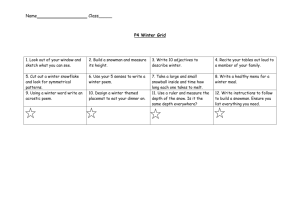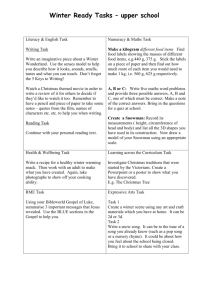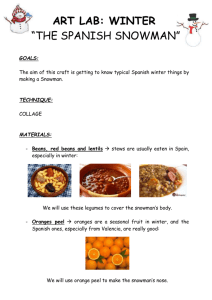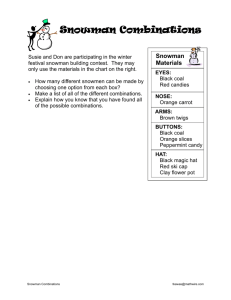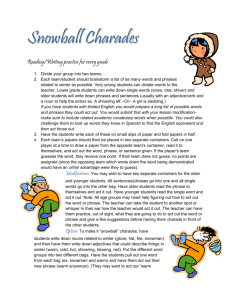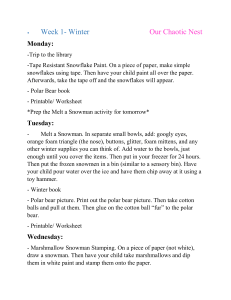Snowman - 2009Apoetry
advertisement
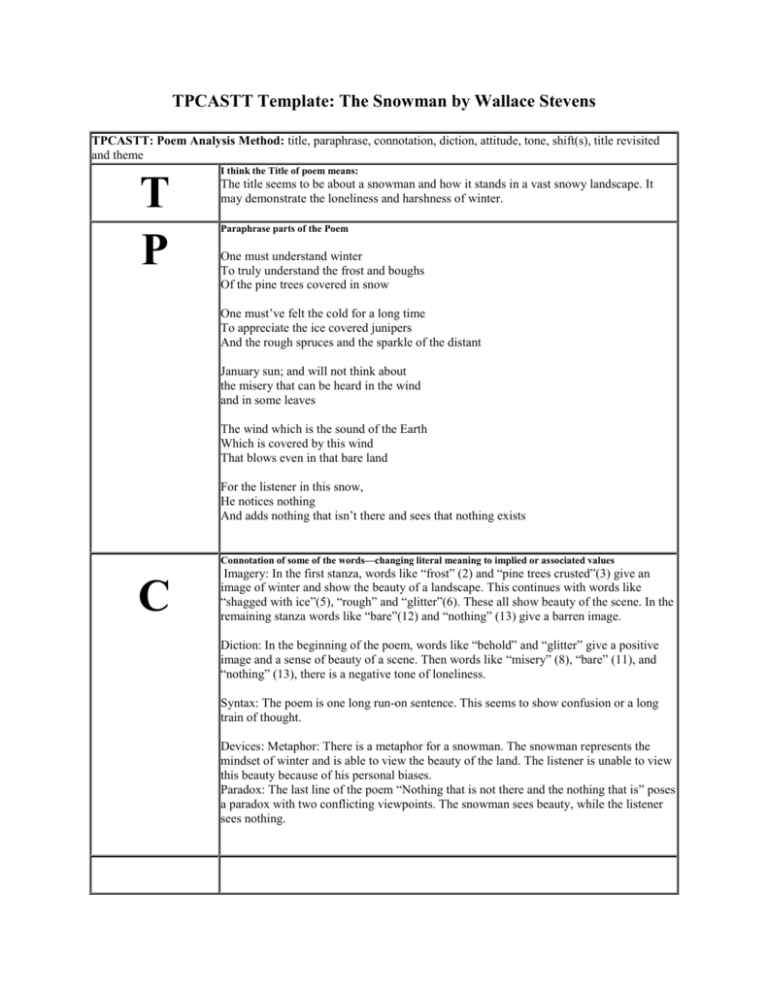
TPCASTT Template: The Snowman by Wallace Stevens TPCASTT: Poem Analysis Method: title, paraphrase, connotation, diction, attitude, tone, shift(s), title revisited and theme T P I think the Title of poem means: The title seems to be about a snowman and how it stands in a vast snowy landscape. It may demonstrate the loneliness and harshness of winter. Paraphrase parts of the Poem One must understand winter To truly understand the frost and boughs Of the pine trees covered in snow One must’ve felt the cold for a long time To appreciate the ice covered junipers And the rough spruces and the sparkle of the distant January sun; and will not think about the misery that can be heard in the wind and in some leaves The wind which is the sound of the Earth Which is covered by this wind That blows even in that bare land For the listener in this snow, He notices nothing And adds nothing that isn’t there and sees that nothing exists Connotation of some of the words—changing literal meaning to implied or associated values C Imagery: In the first stanza, words like “frost” (2) and “pine trees crusted”(3) give an image of winter and show the beauty of a landscape. This continues with words like “shagged with ice”(5), “rough” and “glitter”(6). These all show beauty of the scene. In the remaining stanza words like “bare”(12) and “nothing” (13) give a barren image. Diction: In the beginning of the poem, words like “behold” and “glitter” give a positive image and a sense of beauty of a scene. Then words like “misery” (8), “bare” (11), and “nothing” (13), there is a negative tone of loneliness. Syntax: The poem is one long run-on sentence. This seems to show confusion or a long train of thought. Devices: Metaphor: There is a metaphor for a snowman. The snowman represents the mindset of winter and is able to view the beauty of the land. The listener is unable to view this beauty because of his personal biases. Paradox: The last line of the poem “Nothing that is not there and the nothing that is” poses a paradox with two conflicting viewpoints. The snowman sees beauty, while the listener sees nothing. A Attitude—What is the attitude of the author, characters, or yourself? The attitude of the speaker seems to be instructional. He seems to note the faults of humans and wants them to change. The snowman in the poem is able to see the beauty of a winter landscape, but the human can’t see the beauty because they think about their discomfort in the cold. Shift—At first we think or feel one way—then there is a shift: identify the shifts and explain them S There is a shift in line 7. The first two stanzas note the visual beauty of a winter landscape. In line 7 beginning with “not to think”, there is a slight negative tone. The sounds of a wintery landscape are noted and words like “misery” and “bare” are used. However, since the speaker is noting that the snowman does not think of the negative aspects of a wintery landscape, so the overall meaning of the stanza is positive. The main shift occurs at line 13. There is a shift in perspective from the snowman to a listener. From the perspective of the listener, the wintery landscape means nothing. The shift is from positive to negative tone. Title revisited—any new insights on meaning or significance of title. T “The Snowman” represents a mindset of winter. The snowman, unlike humans has a different perspective of winter. It sees beauty and serenity. This differs from a human, which is too preoccupied with the cold wind of winter. Theme or Author’s Purpose T The author’s purpose was to note how humans are unable to see things from a different perspective because of personal biases. They cannot view things without passing judgment. Therefore, the snowman’s mindset of winter seems to be unattainable by man.
